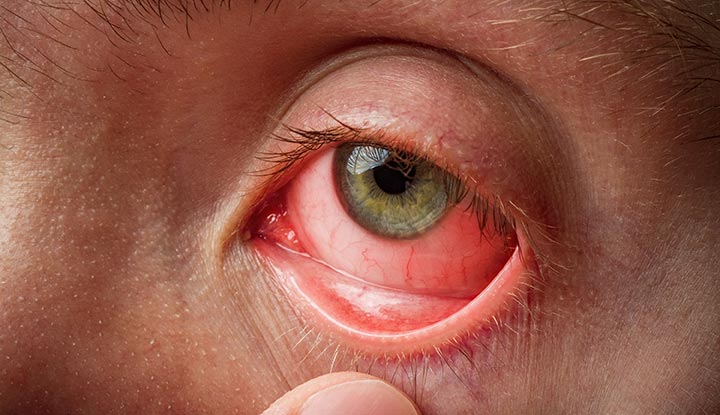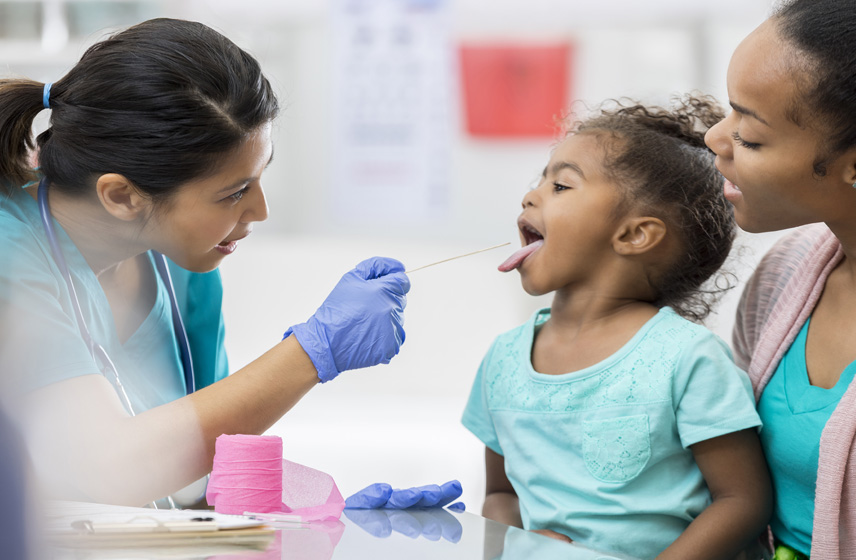Pink eye (conjunctivitis) is inflammation in your eyes. It happens when the membrane that covers the white of your eye is irritated. Viral and bacterial infections are the most common causes. You may not need treatment. But visit a healthcare provider if you have symptoms that are getting worse after a few days.
Advertisement
Cleveland Clinic is a non-profit academic medical center. Advertising on our site helps support our mission. We do not endorse non-Cleveland Clinic products or services. Policy

Pink eye is inflammation in the conjunctiva in your eye. The conjunctiva is the clear membrane that covers part of your eye and the inside of your eyelid. The medical name for pink eye is conjunctivitis. It’s extremely common. It can affect one eye or both at the same time.
Advertisement
Cleveland Clinic is a non-profit academic medical center. Advertising on our site helps support our mission. We do not endorse non-Cleveland Clinic products or services. Policy
Pink eye can be short term (acute) or long term (chronic). Acute pink eye lasts for fewer than four weeks. Chronic pink lasts for more than four weeks.
Pink eye caused by an infection can easily spread. You can accidentally pass it to other people or spread it from one eye to the other.
Just like it sounds, pink eye can make the white part of your eye look pink or reddish. It can also make your eyelids look puffy or droopy. You may notice discharge coming from your affected eyes.
The most common conjunctivitis symptoms include:
Pink eye can share symptoms with lots of other eye conditions. An eye doctor can help you understand what’s affecting your eyes.
Lots of issues and conditions can cause pink eye. Healthcare providers usually divide conjunctivitis into two categories — infectious and noninfectious.
This happens when an infection causes conjunctivitis. Any type of infection can cause pink eye, including:
Advertisement
This happens when something other than an infection causes conjunctivitis. This is pink eye that doesn’t spread to you from other people, animals or contaminated objects.
Examples include:
Untreated conjunctivitis can cause permanent eye damage and even blindness. But this is rare. Complications that can lead to vision loss include:
See an eye doctor or your primary care provider if symptoms are getting worse after more than a few days. That’s the best way to avoid complications.
A healthcare provider will diagnose conjunctivitis with an eye exam. They’ll examine your eye and ask about the symptoms. Tell your provider when you first noticed symptoms and how they’ve changed or gotten worse.
Your provider may also test for bacterial infections. They’ll use a soft-tipped swab to collect some of the fluid oozing from your eye for lab testing. Your provider can use the results to guide your treatment.
You might need a follow-up appointment. Your provider will make sure your eyes are healing and check for signs of complications.
Most of the time, you can treat pink eye symptoms at home until they get better. Your healthcare provider will suggest ways to manage symptoms, including:
If an irritant gets in your eye, you need to rinse it out. Flush your eyes with warm water for five minutes. If a strong acid or alkaline substance (like drain cleaner) gets in your eye, flush your eyes the same way. Then, get immediate emergency medical attention.
Advertisement
Your provider might give you medications to treat a specific cause, including:
How long conjunctivitis lasts depends on what caused it. Viral infections typically last up to two weeks. It’s rare, but some may last longer. Bacterial infections usually last up to 10 days. Allergy-related pink eye lasts as long as you’re around the allergen causing the reaction.
Visit a healthcare provider if you think you have pink eye and the symptoms keep getting worse after a few days.
Some symptoms can be a sign of a serious problem, like an eye ulcer. Visit a healthcare provider right away if you experience:
Advertisement
The outlook for pink eye is good, especially with treatment. Milder cases often go away on their own.
Call your provider if it seems like treatments aren’t helping. They may be able to adjust your medications.
Yes, pink eye can come back. Allergy-related pink eye is the most likely kind to happen again. Your eyes may react every time you’re exposed to an allergen.
If you have bacterial or viral pink eye, you can accidentally reinfect yourself. To avoid that, you should:
You may not always be able to prevent pink eye. But you can lower your risk of some types by:
Advertisement
It can be unpleasant to have pink eye. And if a child you care for has it, you might worry about their eyes and health. Conjunctivitis is typically a minor condition and is usually very treatable. If you have any concerns, talk to a provider (or the provider who cares for your child).
Need care fast? Cleveland Clinic’s Express Care and Urgent Care locations treat everything from sprains to sinus infections — no appointment needed.

Last reviewed on 04/17/2024.
Learn more about the Health Library and our editorial process.